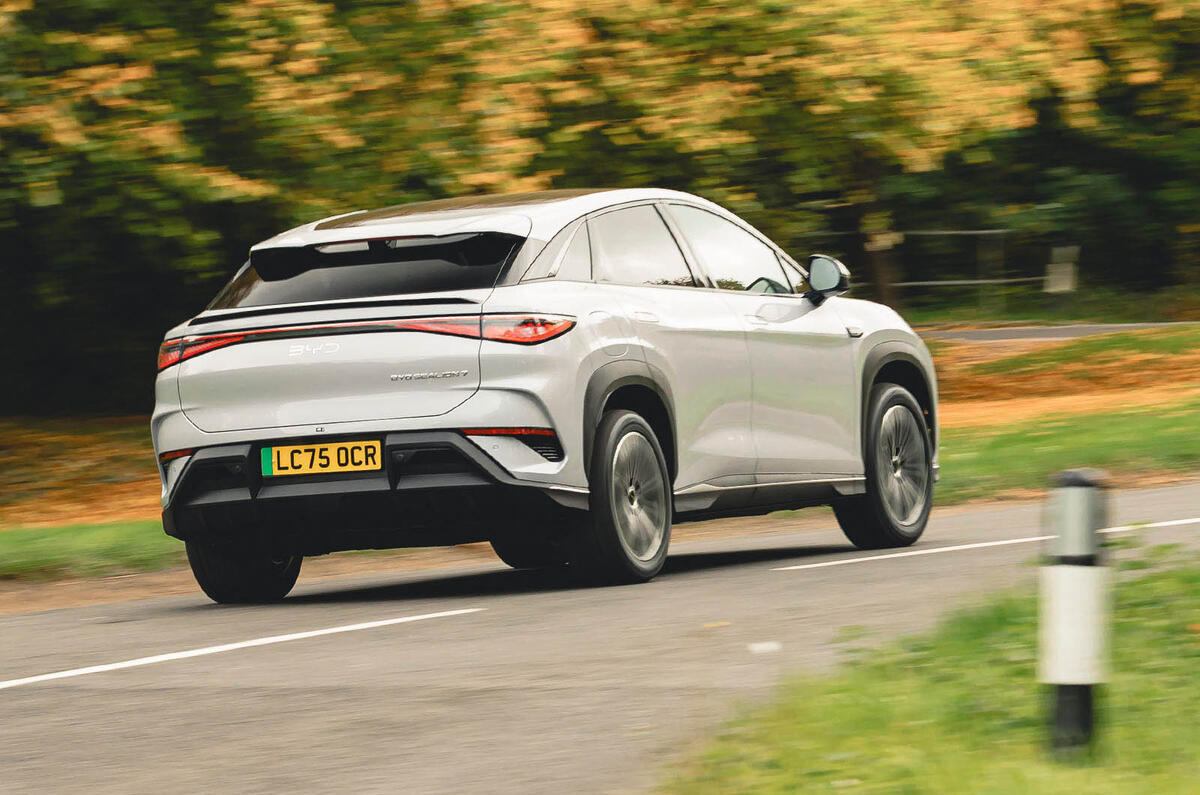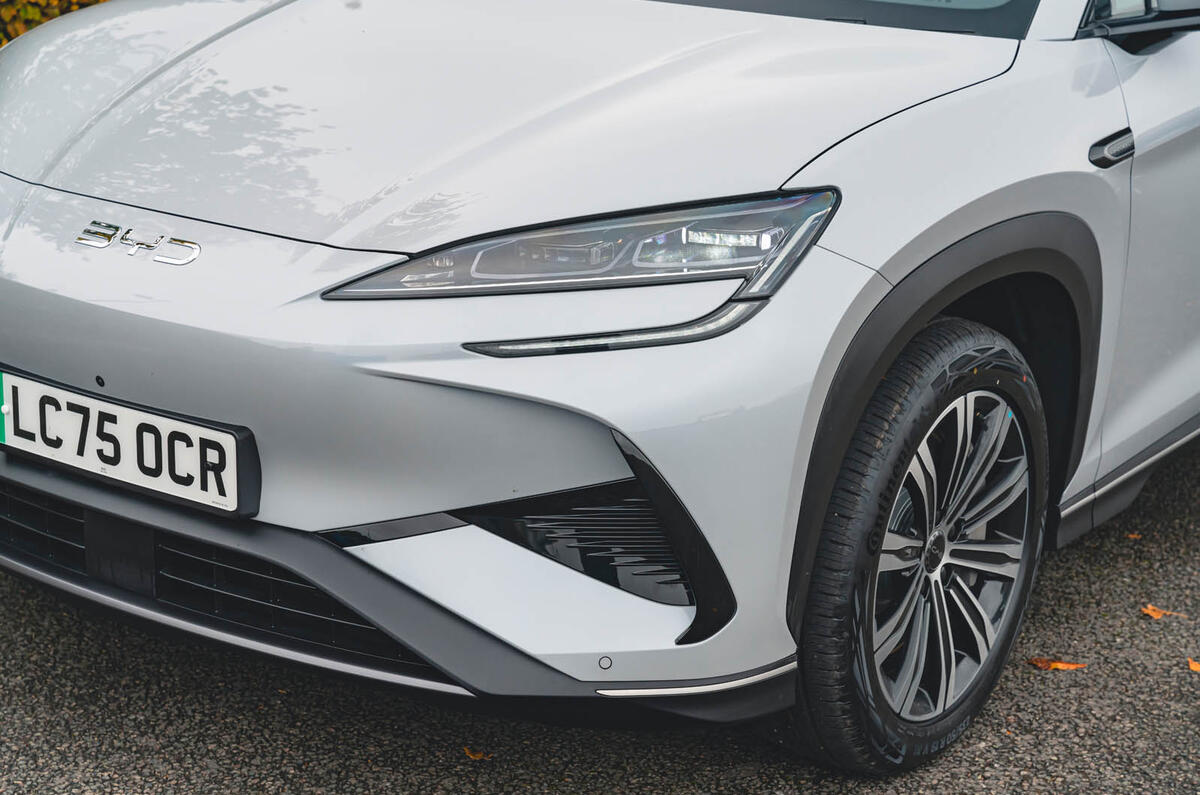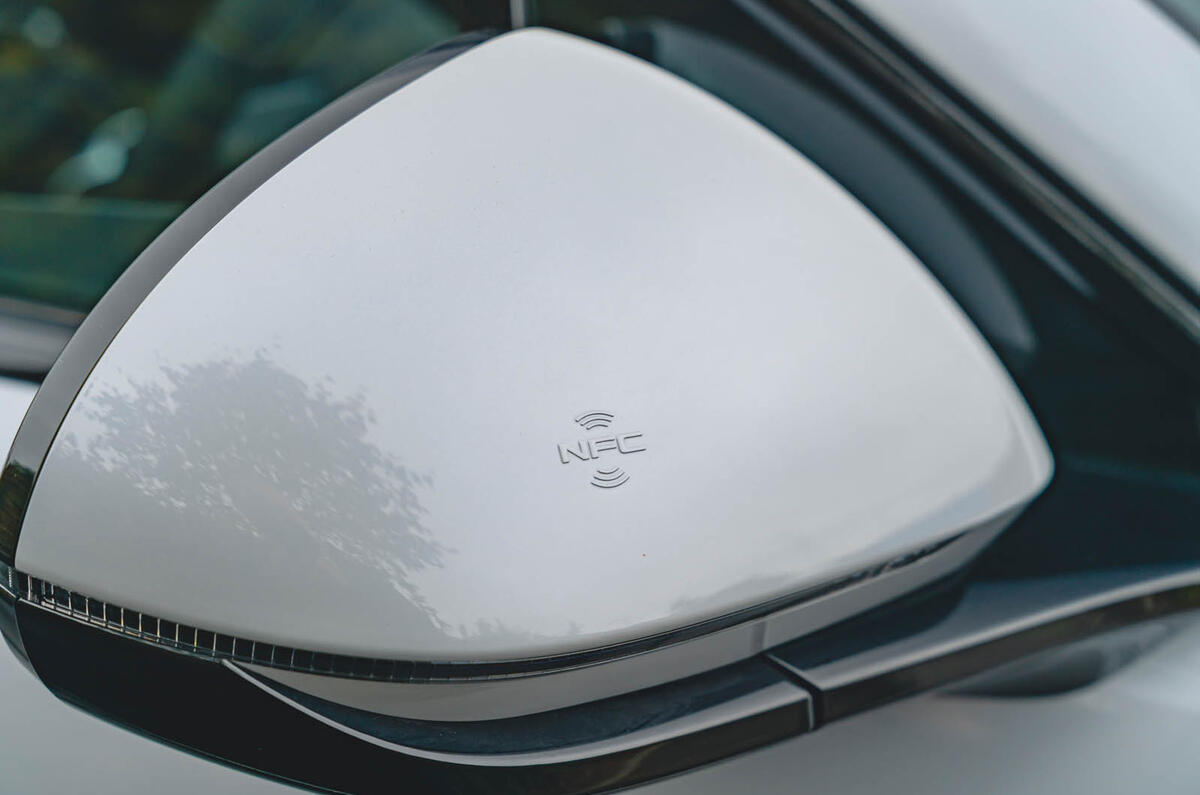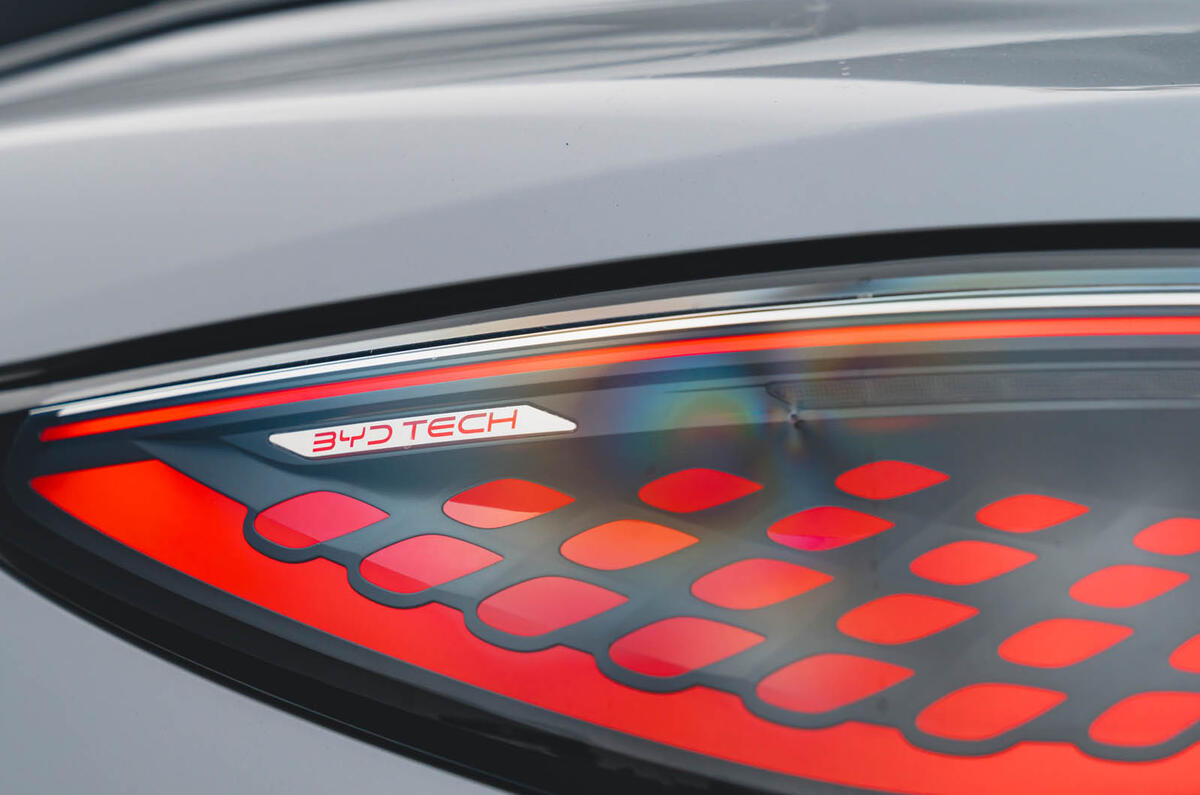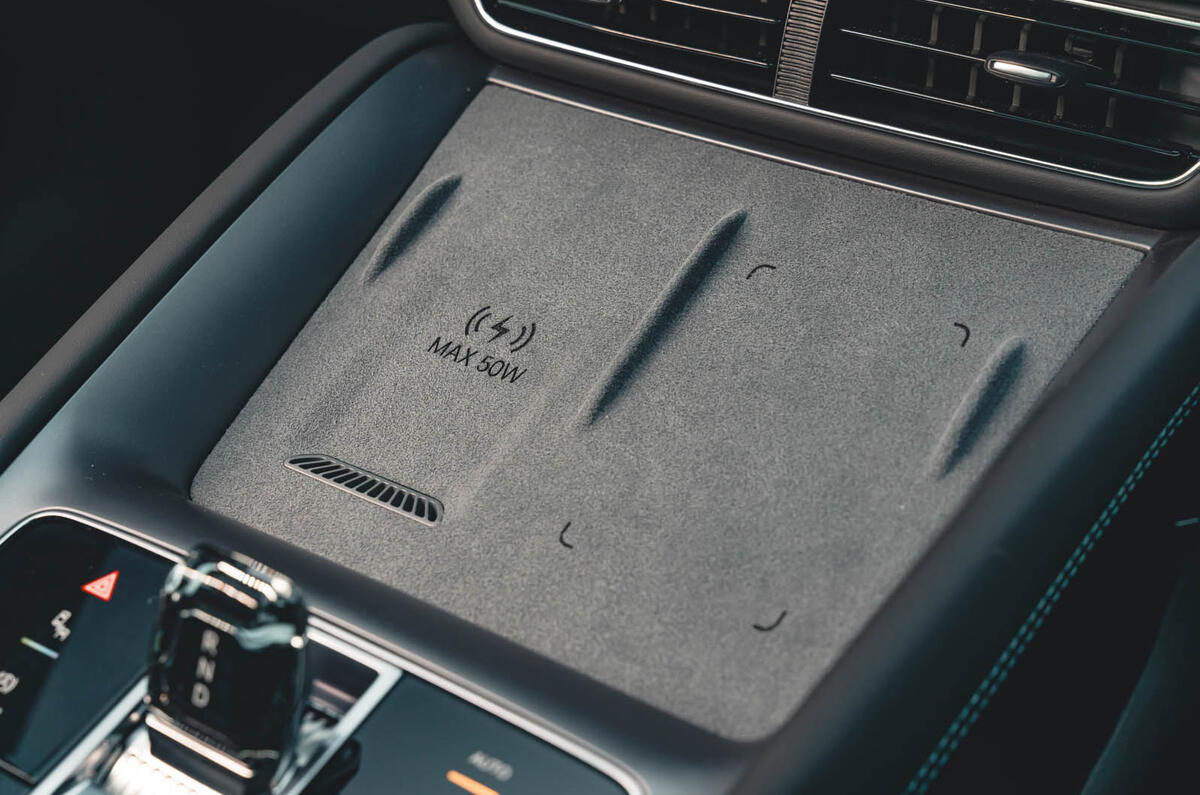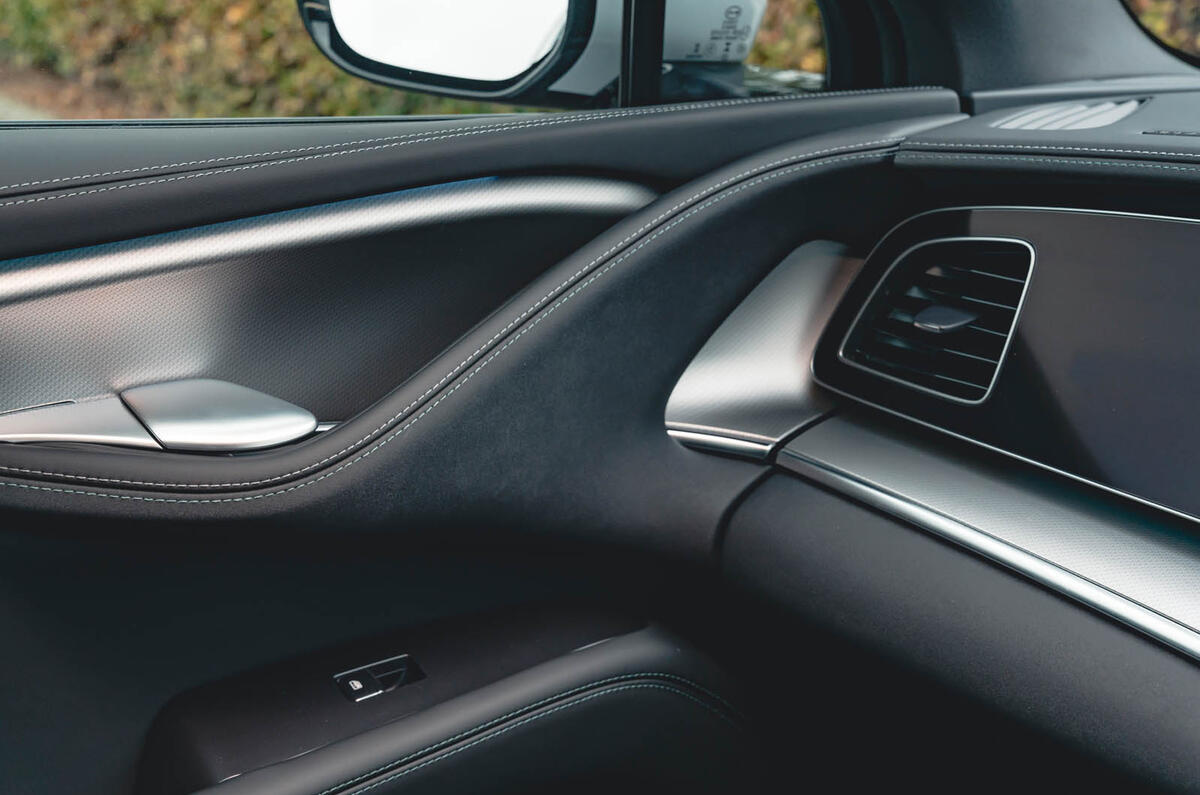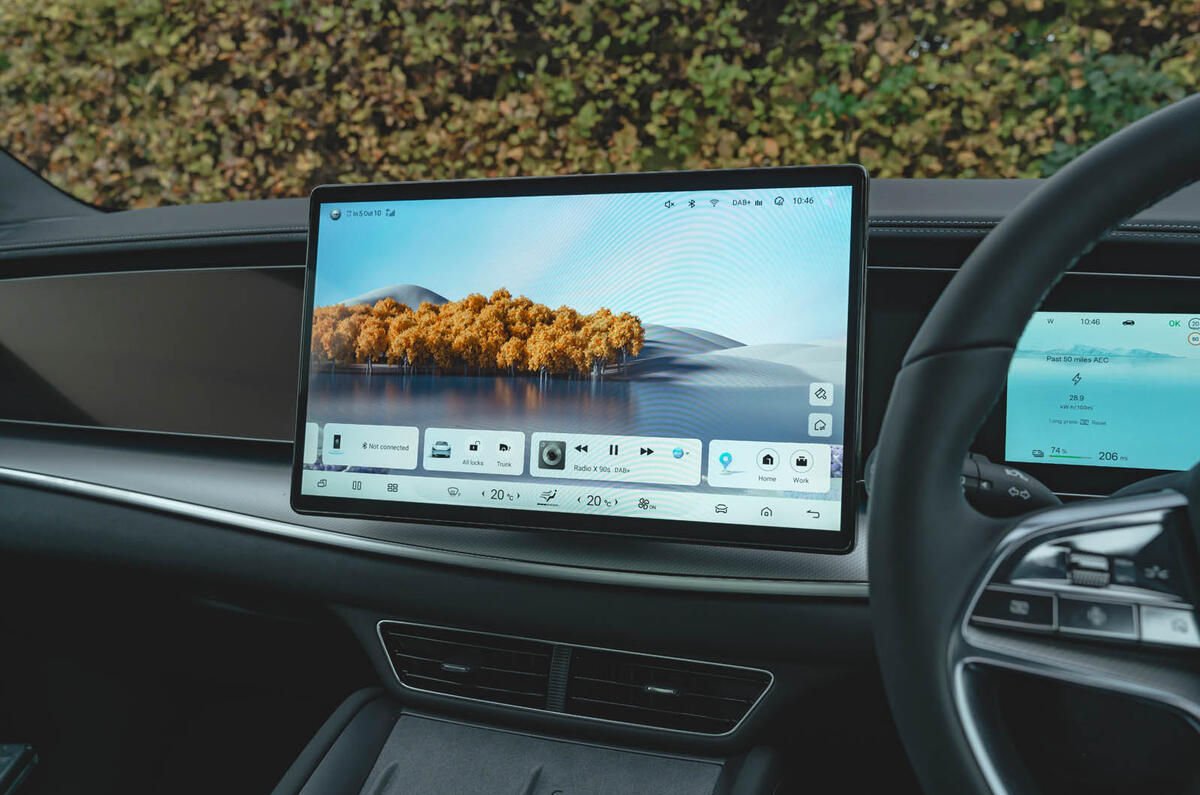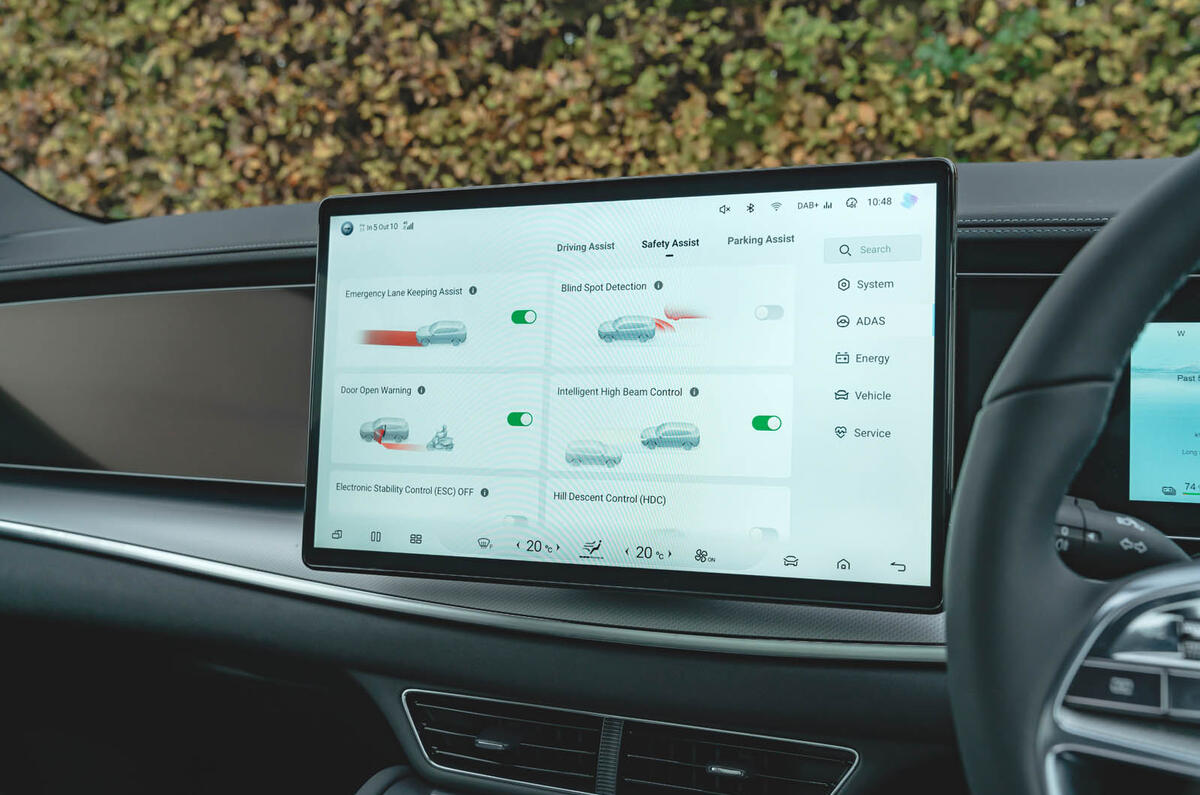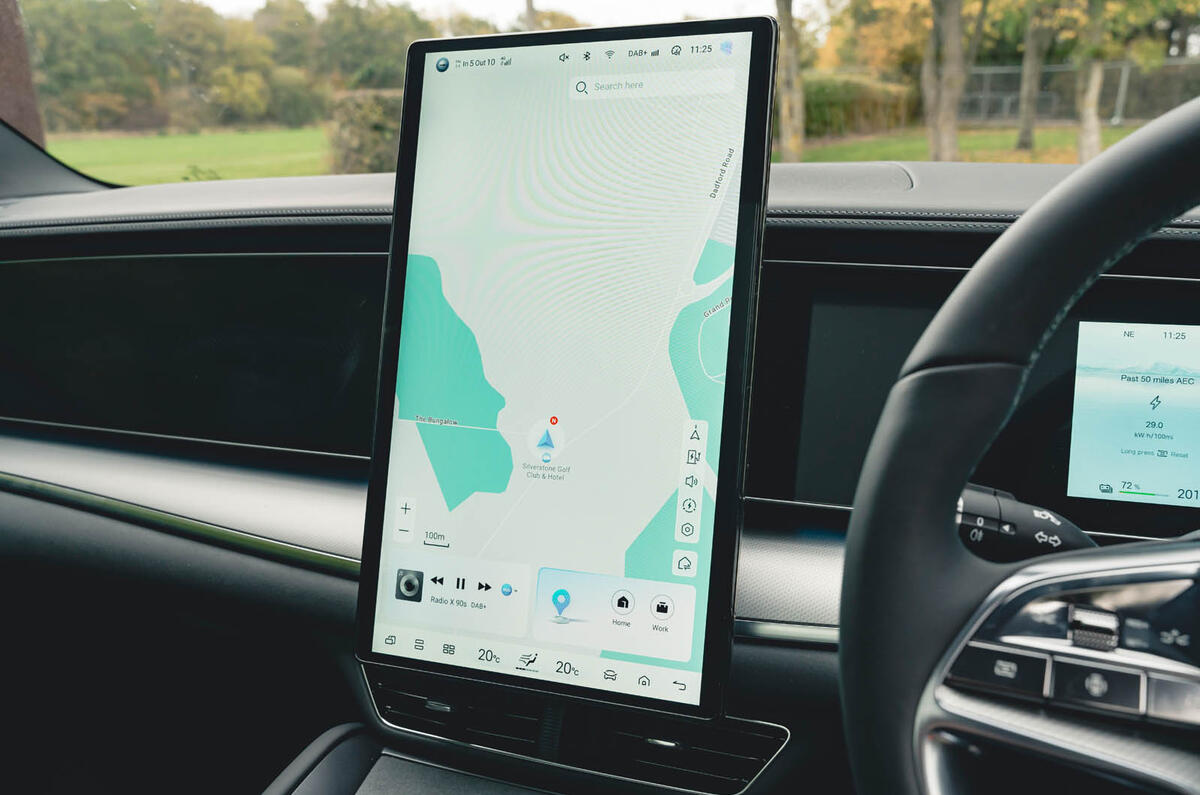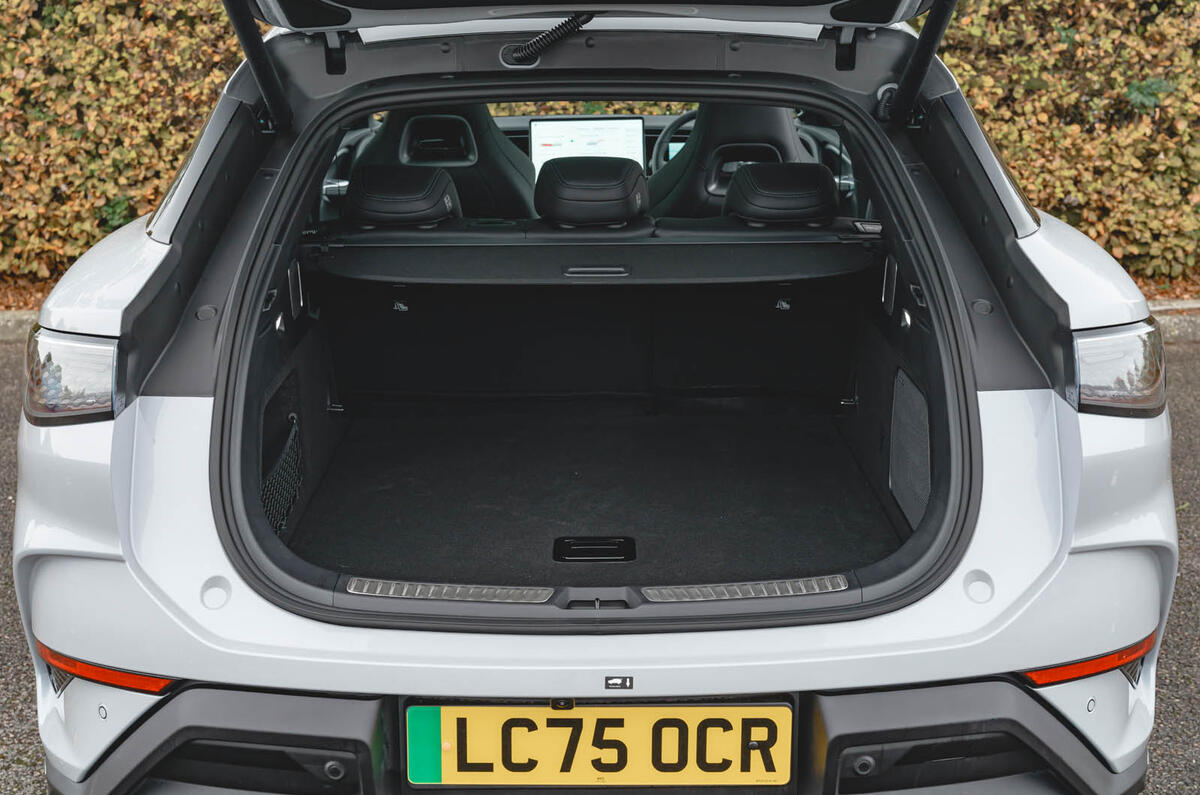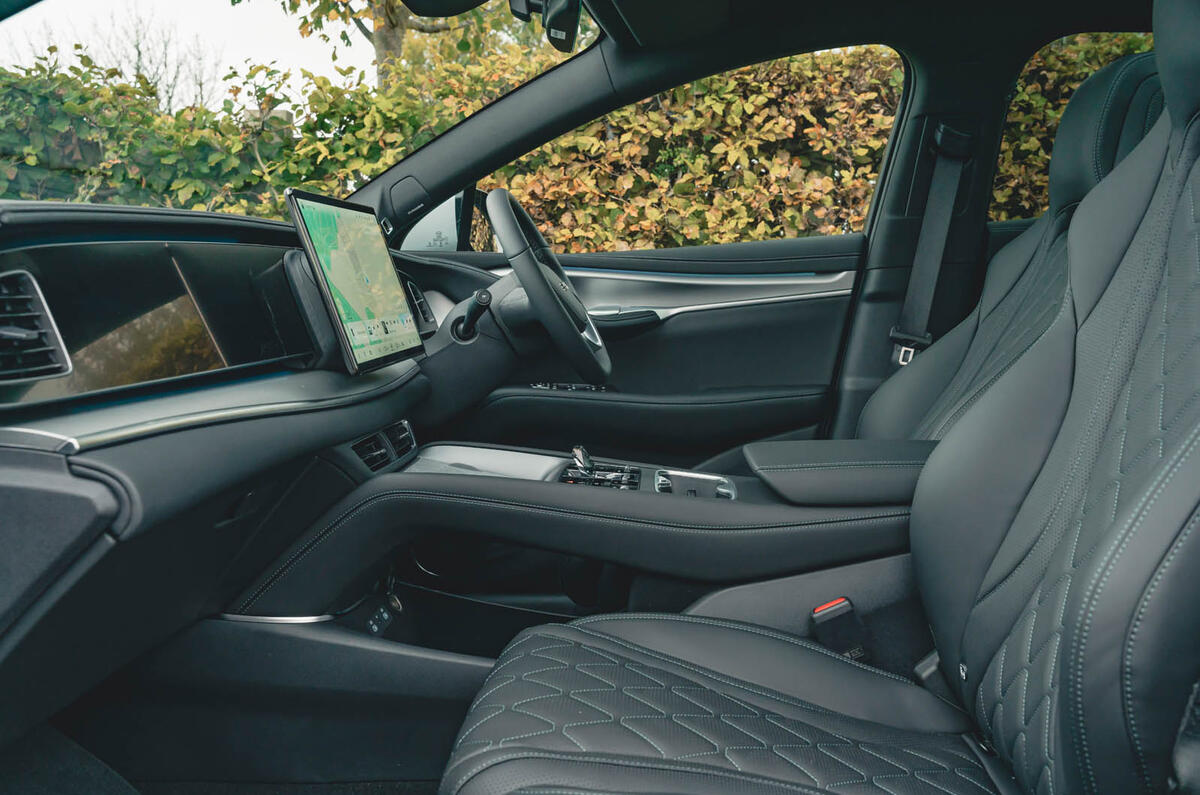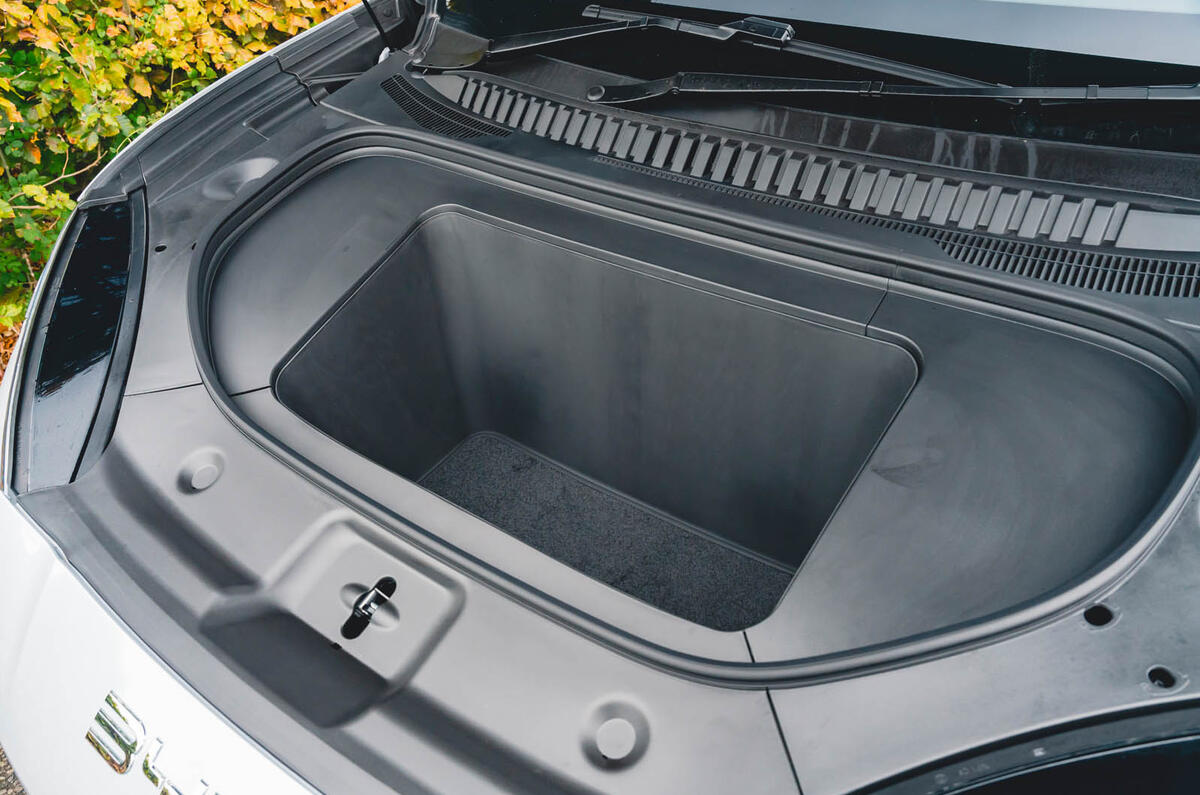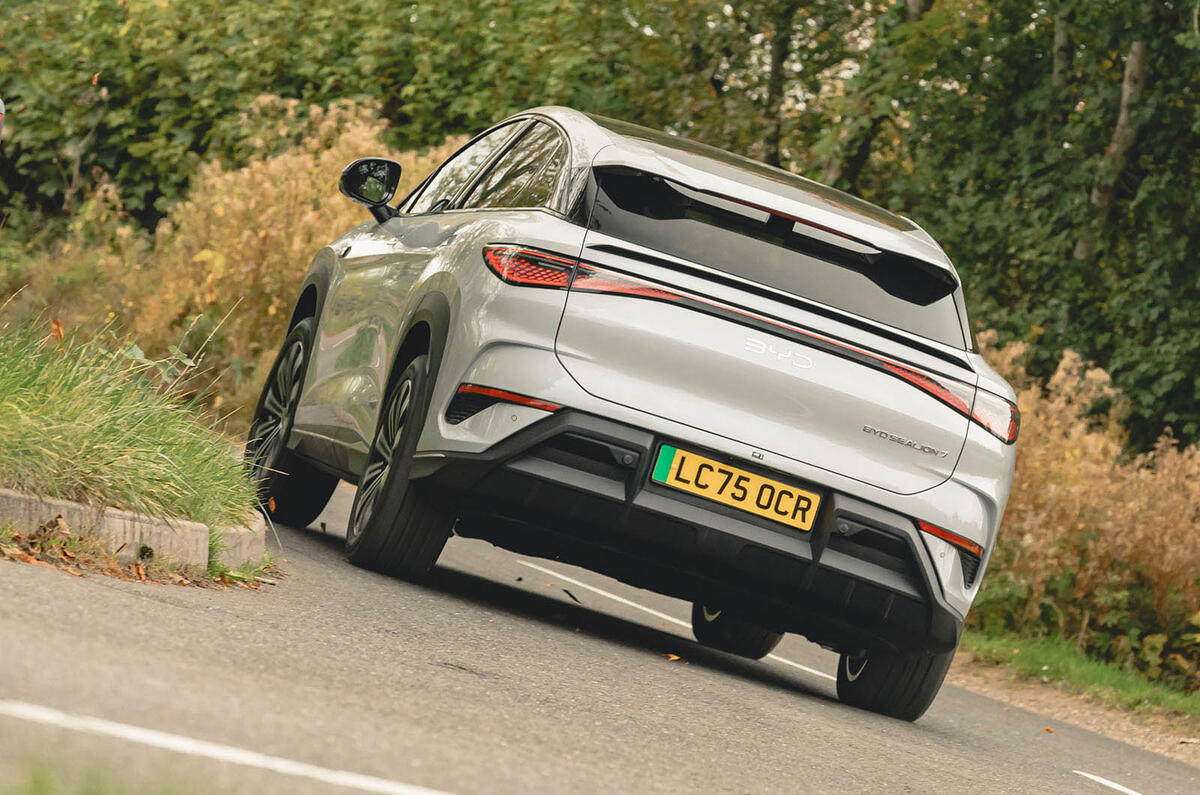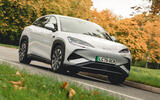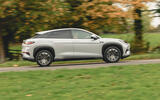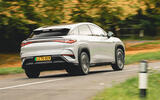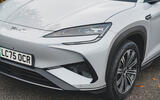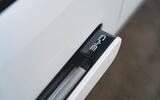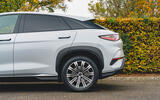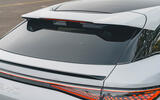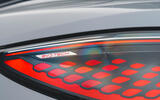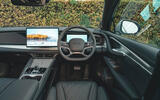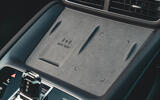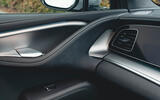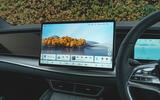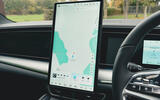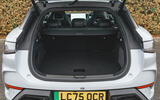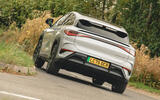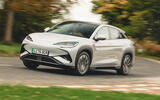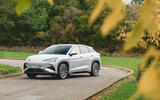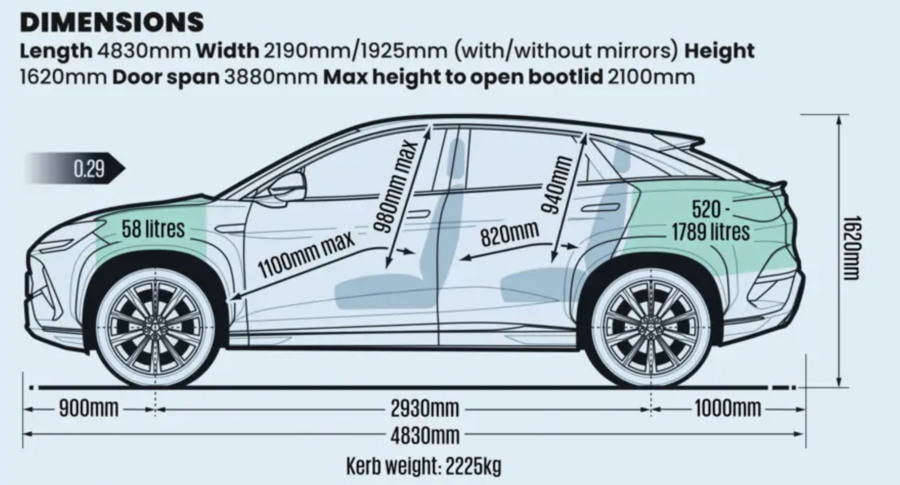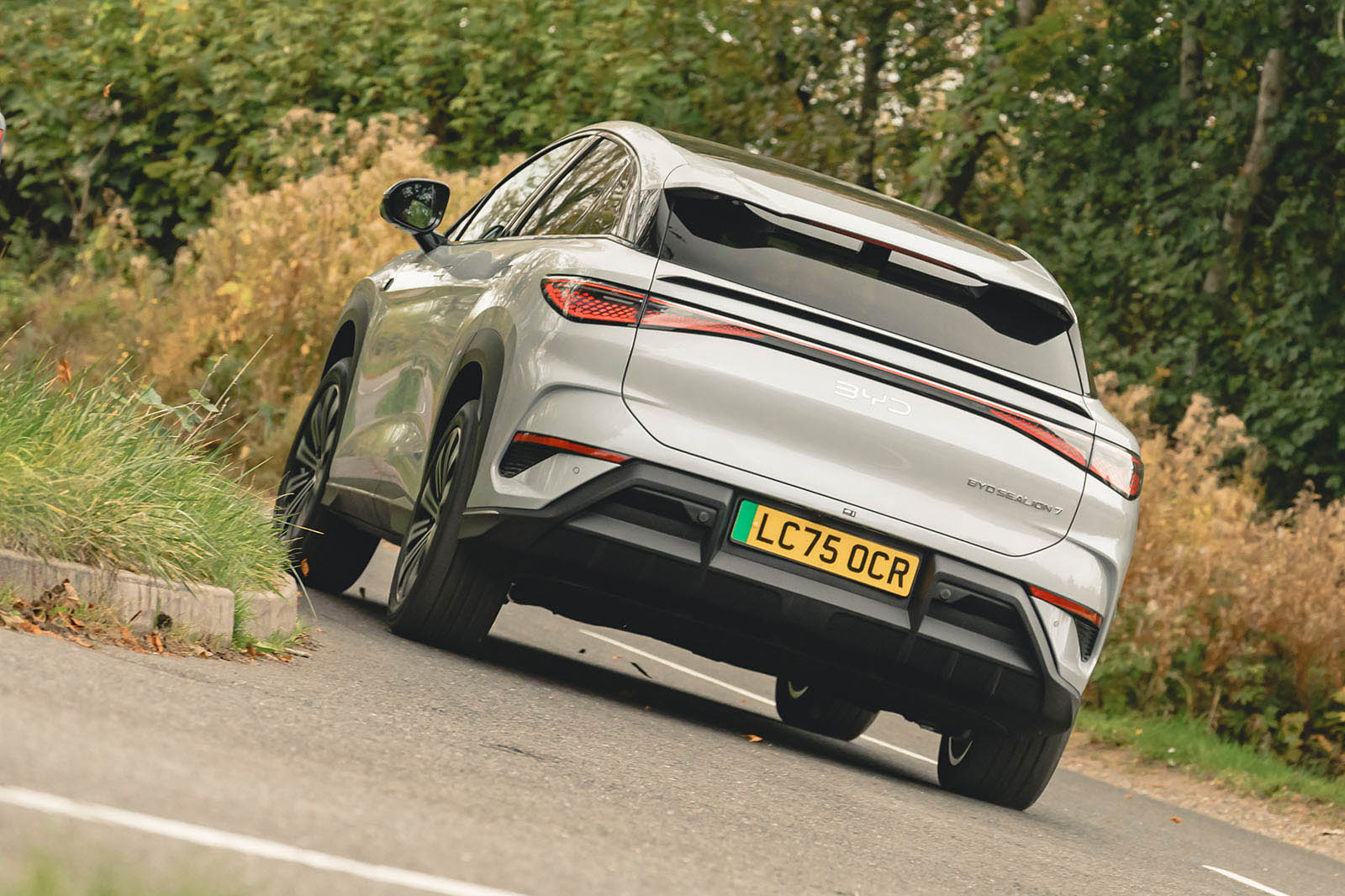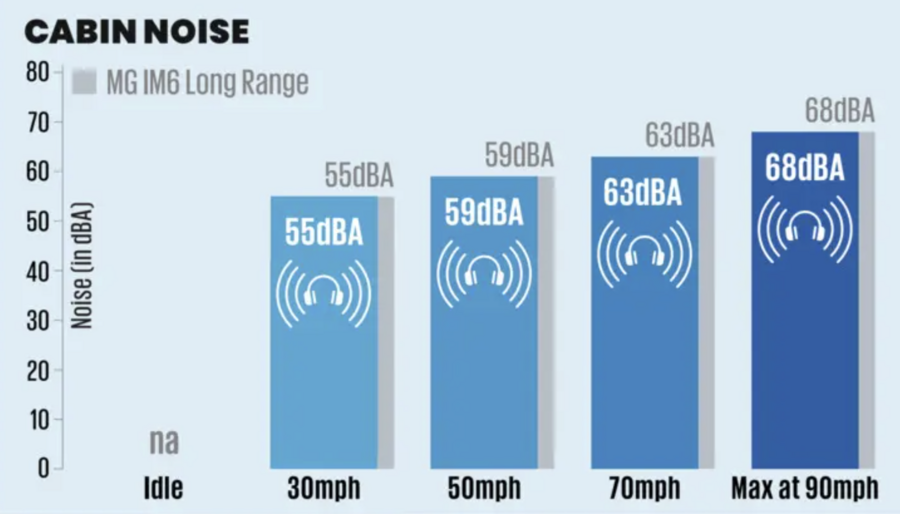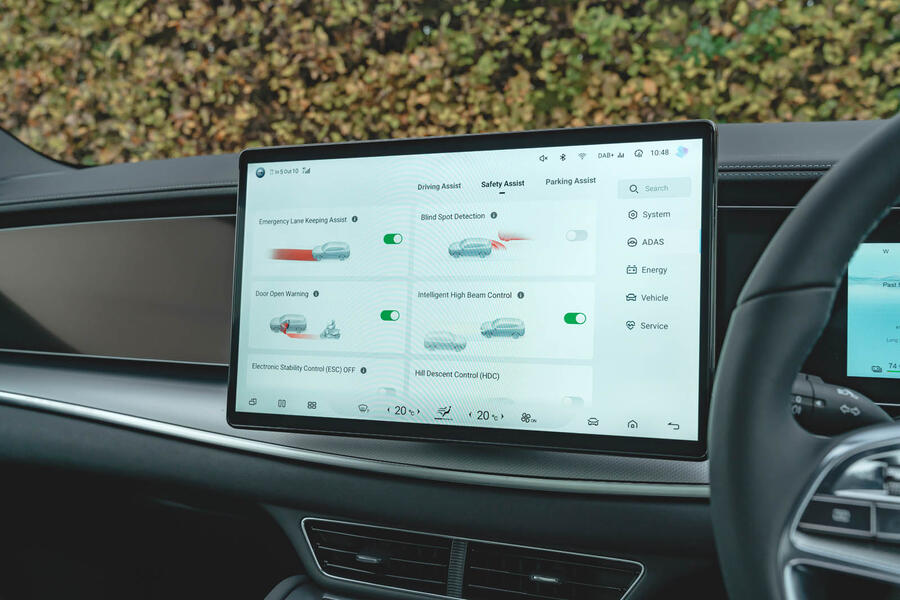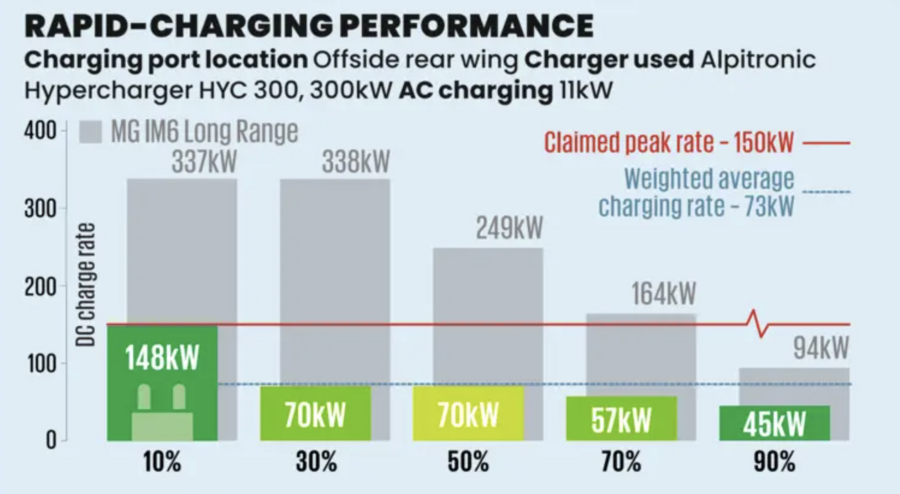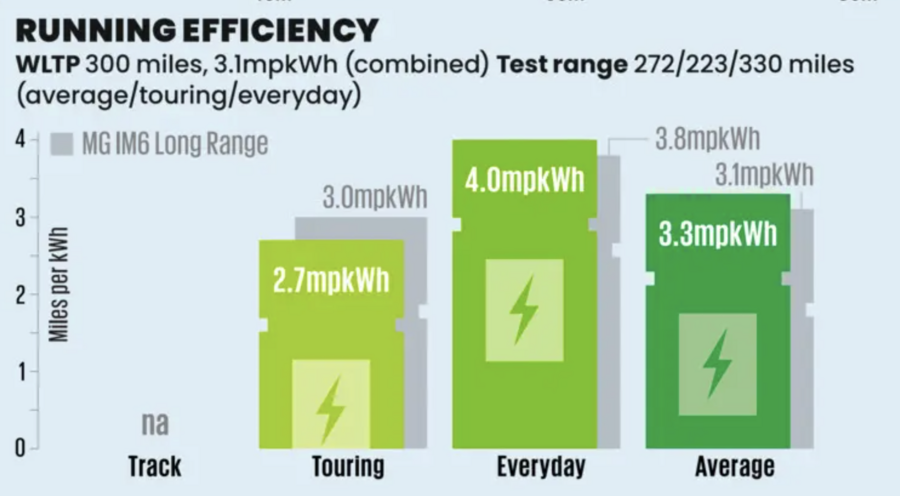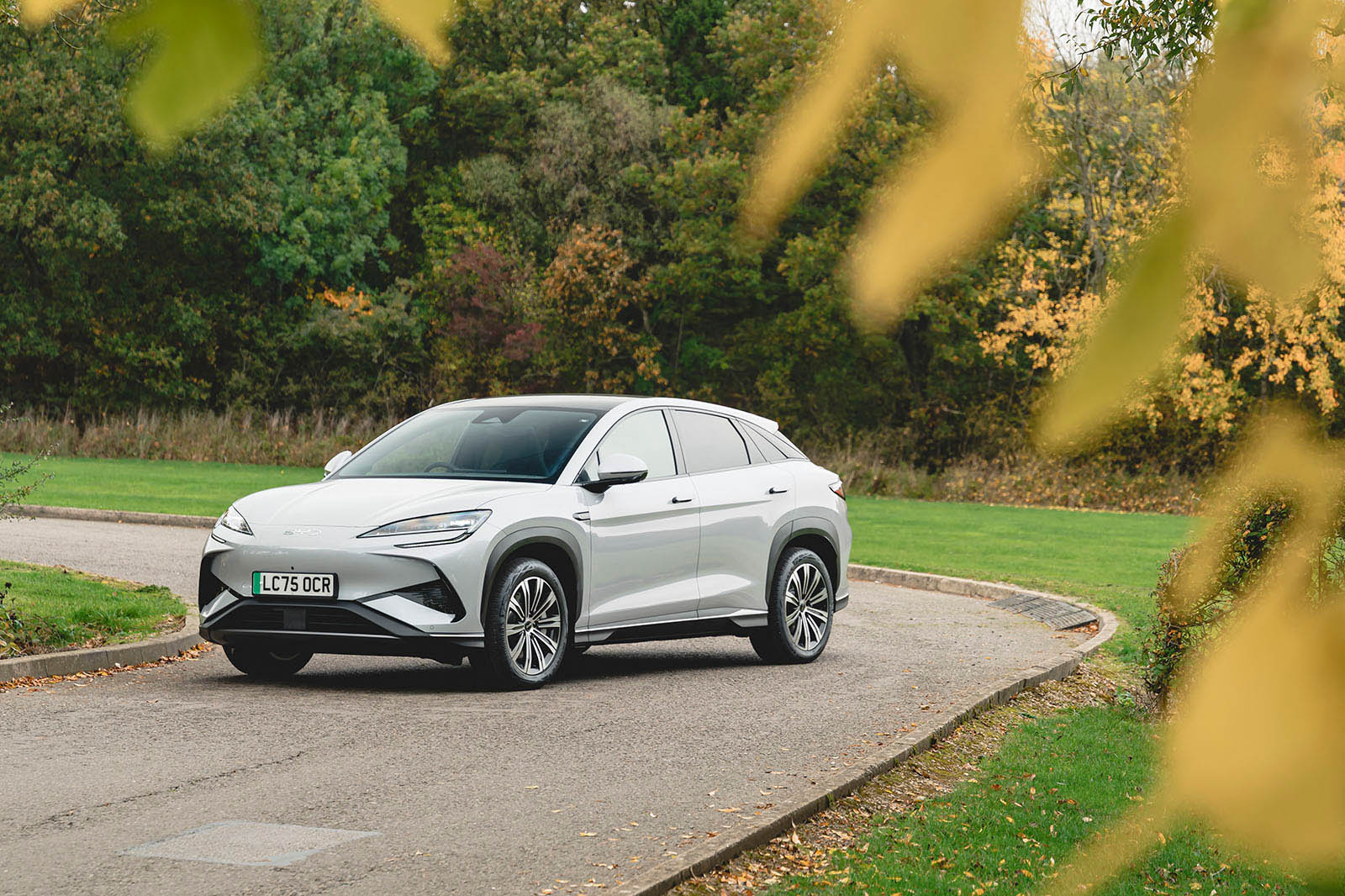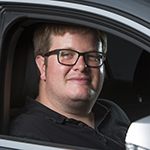BYD is building a reputation for having interiors with impressive tactile quality. The firm’s experimental early efforts (remember the guitar string-inspired door bins of the Atto 3 that you could actually twang?) have given way to a more conventional approach, although for the Sealion 7 it has certainly produced a cabin with plenty of space, plenty of quality feel, and some noticeably expensive highlights.
The driver sits quite upright, bent-legged and ‘over the controls’, in a position that tells you right away that BYD wants to make access easy and comfort a priority – and doesn’t much mind if the end result doesn’t feel sporty.
The front seats are large and comfortable, though they have integrated-style headrests that you can’t move, and aren’t quite as widely adjustable as some in the class. Comfort and Design versions come with synthetic leather upholstery that is pretty convincing and pleasant to the touch, and used widely around the doors and on the dashboard as well as on the seats. If you go for an Excellence model, you get real hide.
Unlike on some rivals we have tested recently, there’s a decent count of physical secondary controls. The centre console includes a swish-looking cut-glass drive selector; knurled-effect chrome switches for drive mode, regen selection and audio volume; and some heating and ventilation controls, although most are accessed through the touchscreen. There are some useful controls on the steering wheel spokes, too, and chunky, no-nonsense interior door release pulls that feel like the antidote to so many annoyingly fashionable, electronic microswitch-style ones. Some of the car’s interior features – the multicoloured ambient lighting in particular – don’t manage to make it look and feel upmarket, but many do, feeling solid and working well.
The second-row seats certainly look airy and open thanks to the standard-fit glass roof, though the arcing roofline and the way the battery affects leg room erode the amount of passenger space they deliver. There’s enough for average-height adults to feel well provided for, but some rivals do better.
Multimedia - 3.5 stars
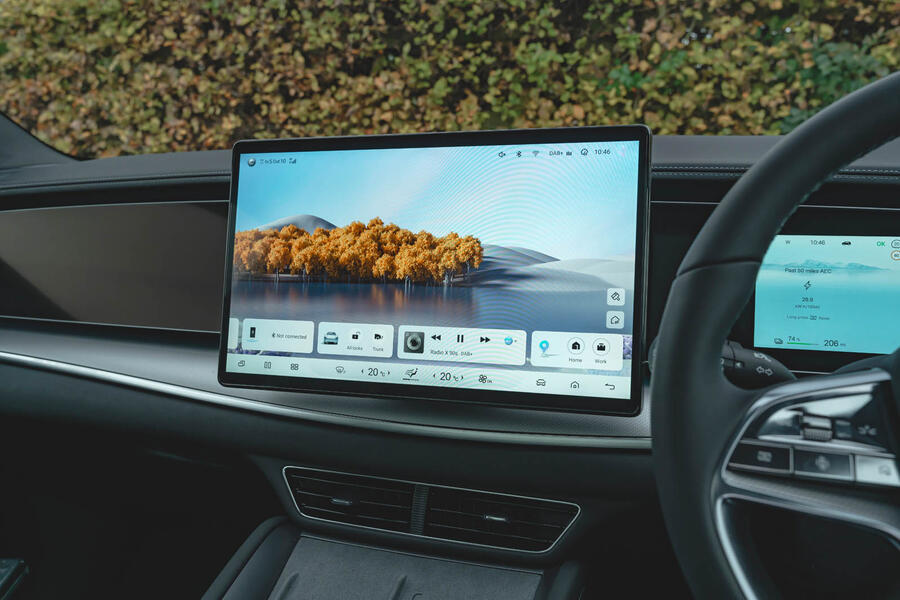
It’s a sign of how much investment manufacturers are pouring into their in-car digital technology that a 15.6in touchscreen console – that rotates from portrait to landscape, as you prefer – doesn’t feel like such a notable feature any more.
BYD has clearly been working on the presentation and usability of the system. It has bigger nav bar icons than previous efforts; gives better access, in and out of smartphone mirroring mode; and manages to group most ADAS controls on a customisable, quick-access swipe-down menu. Annoyingly, though, it continues to bury the driver monitoring system controls elsewhere. That is probably the system you’re most likely to want to turn off, since it’s annoyingly quick to nag. We would still prefer physical HVAC controls, and shorter lists of functions through which to scroll to find a particular toggle.
We would also prefer a bit more flexibility in the layout of the system – you can only have it in landscape mode while you’re using Apple CarPlay, for example. It would also be good if the screen didn’t rotate of its own accord when the car corners hard. It can be a badly timed distraction, though it only happened for us during limit handling testing on track.






